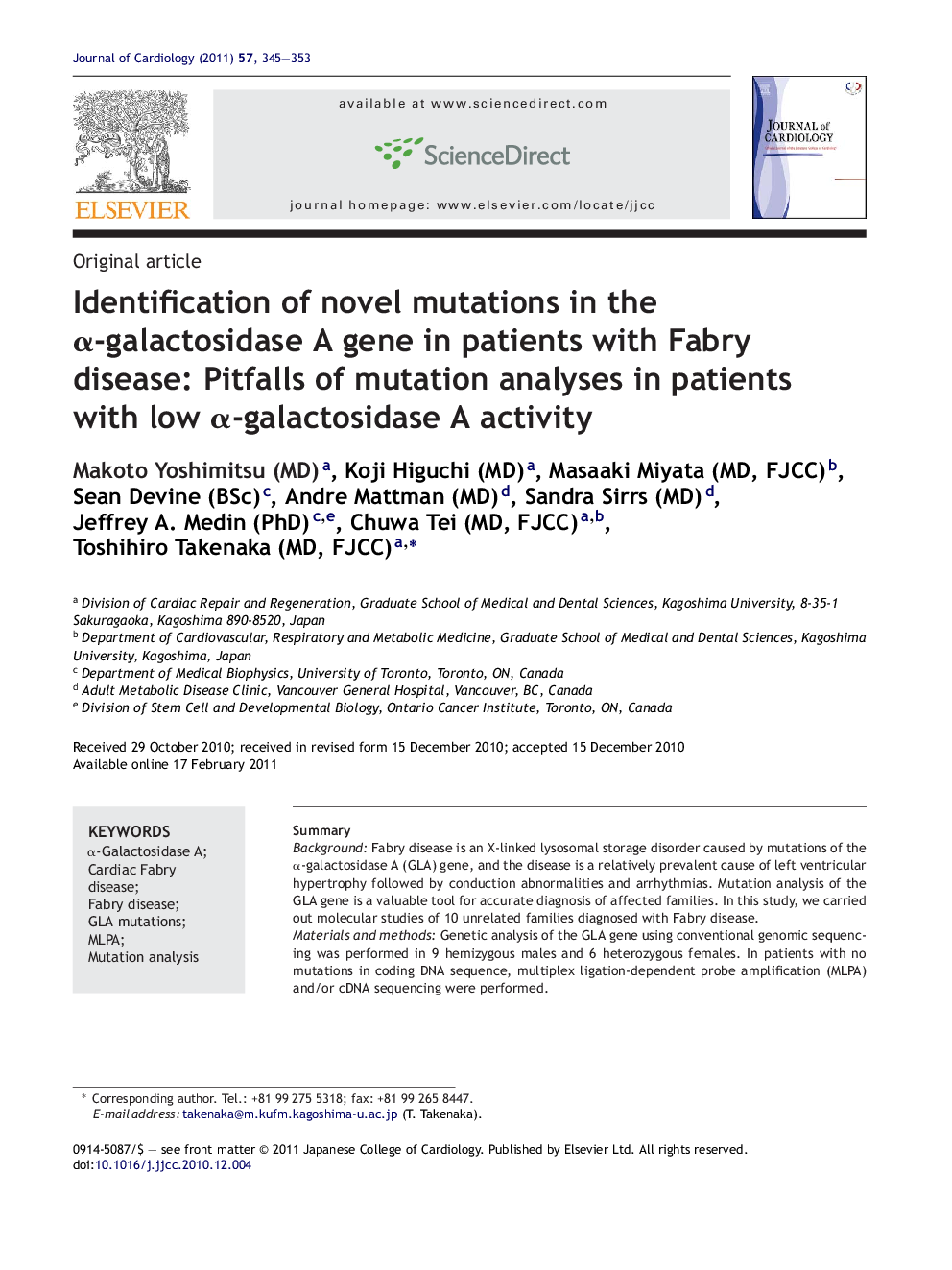| Article ID | Journal | Published Year | Pages | File Type |
|---|---|---|---|---|
| 2963266 | Journal of Cardiology | 2011 | 9 Pages |
SummaryBackgroundFabry disease is an X-linked lysosomal storage disorder caused by mutations of the α-galactosidase A (GLA) gene, and the disease is a relatively prevalent cause of left ventricular hypertrophy followed by conduction abnormalities and arrhythmias. Mutation analysis of the GLA gene is a valuable tool for accurate diagnosis of affected families. In this study, we carried out molecular studies of 10 unrelated families diagnosed with Fabry disease.Materials and methodsGenetic analysis of the GLA gene using conventional genomic sequencing was performed in 9 hemizygous males and 6 heterozygous females. In patients with no mutations in coding DNA sequence, multiplex ligation-dependent probe amplification (MLPA) and/or cDNA sequencing were performed.ResultsWe identified a novel exon 2 deletion (IVS1_IVS2) in a heterozygous female by MLPA, which was undetectable by conventional sequencing methods. In addition, the g.9331G>A mutation that has previously been found only in patients with cardiac Fabry disease was found in 3 unrelated, newly-diagnosed, cardiac Fabry patients by sequencing GLA genomic DNA and cDNA. Two other novel mutations, g.8319A>G and 832delA were also found in addition to 4 previously reported mutations (R112C, C142Y, M296I, and G373D) in 6 other families.ConclusionsWe could identify GLA gene mutations in all hemizygotes and heterozygotes from 10 families with Fabry disease. Mutations in 4 out of 10 families could not be identified by classical genomic analysis, which focuses on exons and the flanking region. Instead, these data suggest that MLPA analysis and cDNA sequence should be considered in genetic testing surveys of patients with Fabry disease.
